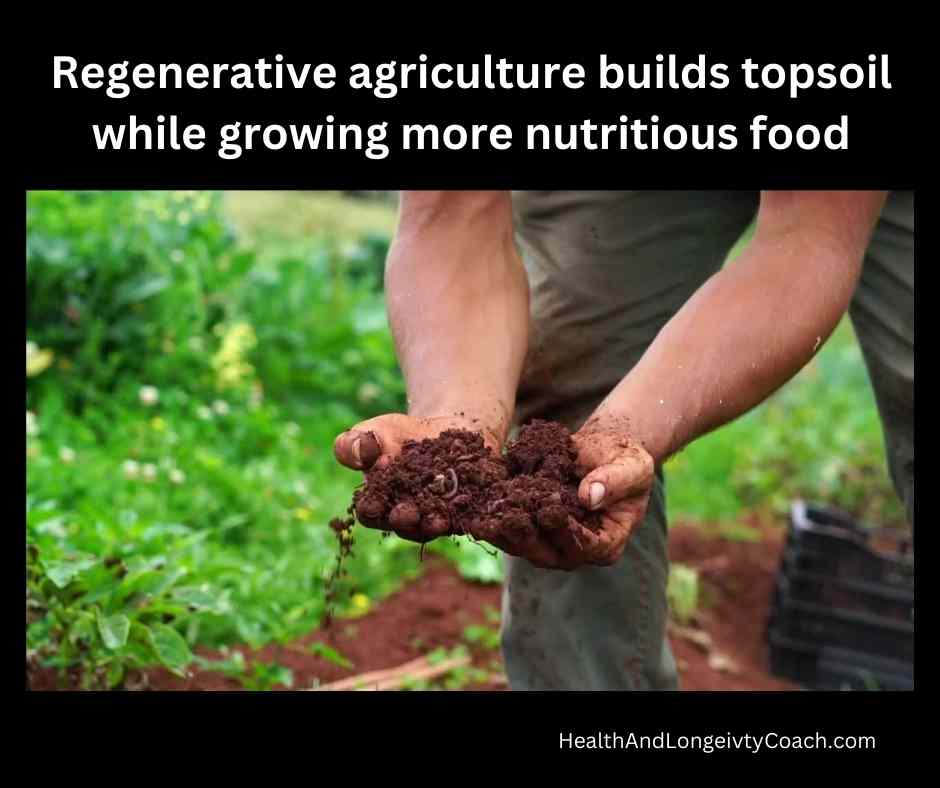Do you hail from one of the generations that have grown up with processed and fast food? Or do you remember a time when fresh milk was served at the table, fresh from the cow? How much do you know about the food you eat and how it is produced?
I grew up helping out at the family grocery store in the San Francisco Bay area. My father would have groups of children come in on field trips. I was amazed at how disconnected kids were from how our food grows. “Milk doesn’t come from cows. It comes from a carton.” They seriously didn’t know any different.
The general population is becoming increasingly disconnected from the natural world and its cycles. Often, people are so used to being able to get food and produce shipped for 100,000’s of miles, that they don’t have a real sense of the tole our agricultural practices are taking on the earth. In reality, agriculture is the most destructive human activity there is.
It is estimatied that we are losing topsoil 10 times faster than we are able to generate more. The loss is even greater in India and China. At this rate, some experts predict that we may run out of topsoil – and the ability to grow food – within 60 years.
I am writing this series of posts because, as I often point out to people, “We can’t live for a long time on a dead planet.” They get it, yet most don’t have a clue what to do about it.
Industrial Agriculture
Since the green revolution in the 1930’s chemical pesticides and herbicides on massive factory farms have become mainstream. The produce my look perfect, but it comes at a cost. Besides the destruction of topsoil, with huge amounts blowing away every season, the produce is less nutritious. Soils are depleted of trace minerals and micronutrients. Fruit and vegetable varietals are choosen for uniformity, looks and shippability rather than nutritive value.
In one report comparing nutrient data from the 50’s and 60’s, Brian Halweil, researcher at the Worldwatch Institute found that you would need to eat 21 oranges to get the Vitamin A equivalent that was abundant in one orange in the 50’s.
When we overeat, is it because the body is craving nutrition that simply isn’t there anymore?
Regenerative Agriculture
Regenerative agriculture, on the other hand, is a farming approach that emphasizes building healthy soil, biodiversity, and ecosystem function. The intention is to produce wholesome, nutritious food while regenerating the natural resources on which agriculture – and all of life – depends.
Redesigning how we grow food and raise livestock to regenerate topsoil and ecosystems is seen as a solution to some of the major challenges facing agriculture and food production today, including soil erosion, water depletion, and climate change.
Regenerative agriculture is based on a set of principles that focus on the relationship between soil, plants, and animals, and the role of farmers in managing these relationships.
One of the key principles of regenerative agriculture is soil health. Soil health, with a rich diversity of microbes and mycorrhizal fungi is critical to the success of regenerative agriculture. Living, active soil is the foundation for the growth of healthy crops and the maintenance of a healthy layer of topsoil.
How to Regenerate Topsoil
Regenerative farmers focus on building healthy soil in a variety of ways, including:
- minimizing soil disturbance (not hby spraying Roundup, which kills soil organisms)
- adding organic matter (compost, mulching, woodchip gardening)
- Soil testing, adding trace minerals and nutrients from natural sources as needed
- using cover crops to protect the soil from erosion and to promote nutrient cycling
- Rotating animals on the land
- Permaculture and biodynamic farming methods
- Watering with structured water
Biodiversity
Another principle of regenerative agriculture is biodiversity. Biodiversity is important because it supports healthy ecosystems and provides a range of benefits, such as natural pest control and pollination. Regenerative farmers use techniques that promote biodiversity, such as planting cover crops, intercropping, and incorporating native plants into their farming systems.
Food forests are an example of designing an ecosystem that intentionally puts fruit trees with nitrogen fixers and plants with deep taproots which pull nutrients up from below, making them bioavailable at root level. Mycorrhizae inoculation promotes a healthy fungal network intelligently providing nutrient transport laterally where plants need it for healthy growth. Bushes like black currant and aronia berry are planted in the understory, which attract pollinators while providing delicious antioxidant rich berries for human consumption. Garlic can be planted at the root line, serving as a natural insect repellant against apple maggots and other pests.
We need to draw down carbon
Regenerative agriculture emphasizes the importance of animal welfare beyond making sure the animals are humanely raised. Animals play an important role in regenerative agriculture, as they can help to improve soil health and nutrient cycling. SUstainable agriculture is not possible without animal inputs. Learning how to work with nature and the animals is key to creating agriculture as healthy thriving ecosystems.
Regenerative farmers who practice rotational grazing help promote pasture regrowth while increasing water absorption and decreasing water runoff. Pastures become more drought tolerant, with deeper root systems, greatly increasing the ability of fields to sequester carbon.
Managed grazing can to address the world’s most widespread land use. Improved grazing can sequester 0.5–3 metric tons of carbon per acre. While the animals still produce methane and nitrous oxide, the greenhouse gases they produce are more than offset by the carbon sequestration. Learn more about Project Draw Down.
Implementing managed grazing around the world, along with permaculture and regenrative agriculture practices is regreening deserts, restoring the water cycle, and allowing subsistence farmers to grow food for their families in previously inhospitable conditions.
Free range and managed grazing techniques allow animals to maintain health without antibiotics and hormones. Allowing the animals to eat, trample, poop, and move on, not returning to the same location until it has sufficiently regrown allows the animal inputs to play a healthy role in restoring the nutrient cycle and increase the biodiversity of the local ecosystem.
Take Action
What would you like to do to play your part in the move to regenerative agriculture?
One of the easiest things you can do is investigate whether there are local regenerative farmers and ranchers you can support. Getting to know you local food producers can be a rewarding and informative experience.
I spent many years as a vendor at the Olympia Farmers Market. There I learned that even though a small farm might not be able to afford the organic certicication, talking with them I would learn how they loved and cared for the land.
If you have a food coop or natural food store in your area, request they source local and regenerative agriculture products as much as possible. If your big chain supermarket has a manager friendly to the cause, you might see if they can bring in grassfed and regenerative agriculture products as well. As demand increases, more farmers will see the economic incentive to make the switch.
There are some great documentaries out about sustainable agriculture and what is possible when we work with nature to build healthy soil. One of my favorites is Kiss the Ground, which has an excellent visual time lapse map demonstrating how carbon dioxide in the atmosphere goes way up during tilling season, then it drops back down as the crops grow.
You can find it among the movies at the link below.
8 Must-Watch New Sustainable Agriculture Documentaries (nycfoodpolicy.org)
Conclusion
Regenerative agriculture is a farming approach that emphasizes the creation of healthy soil, biodiversity, and ecosystem function. It seeks to produce food in a way that regenerates the natural resources on which it depends, rather than degrading them. By following regenerative farming practices, we can build nutrition back into our food supply, while helping to rebuild topsoil and mitigate many of the challenges of resource depletion and climate change.
Getting educated and doing what you can to support regenerative farmers will go a long way toward our ability to grow nutritious food while restoring the planet.

